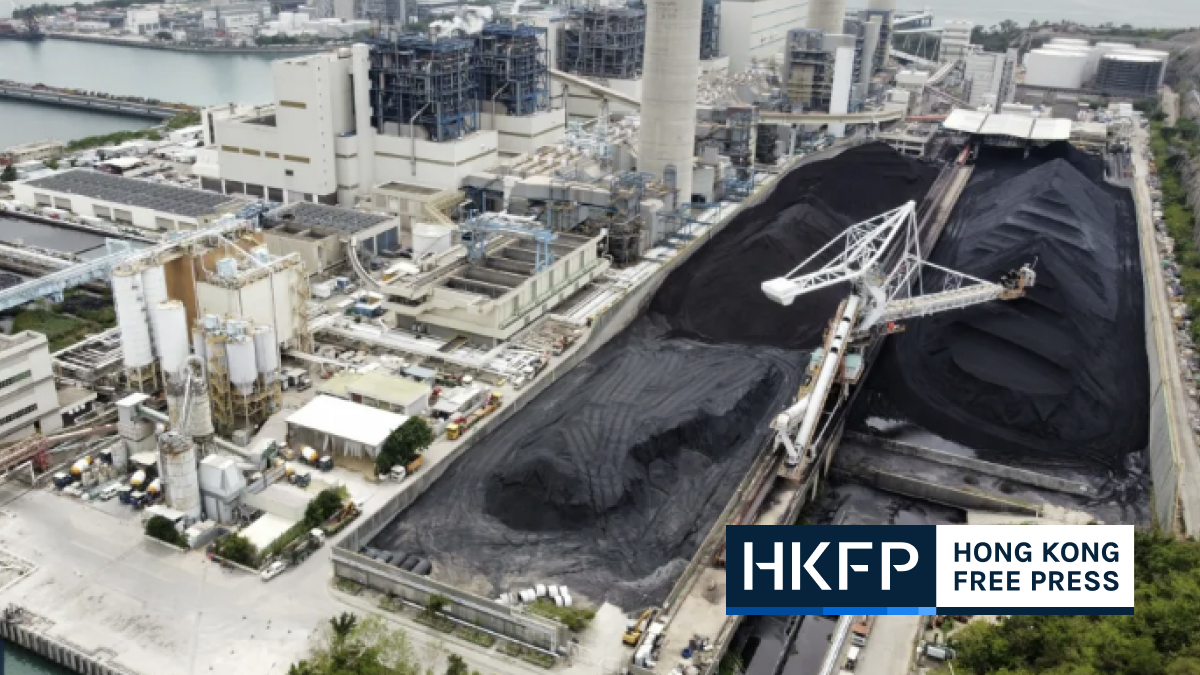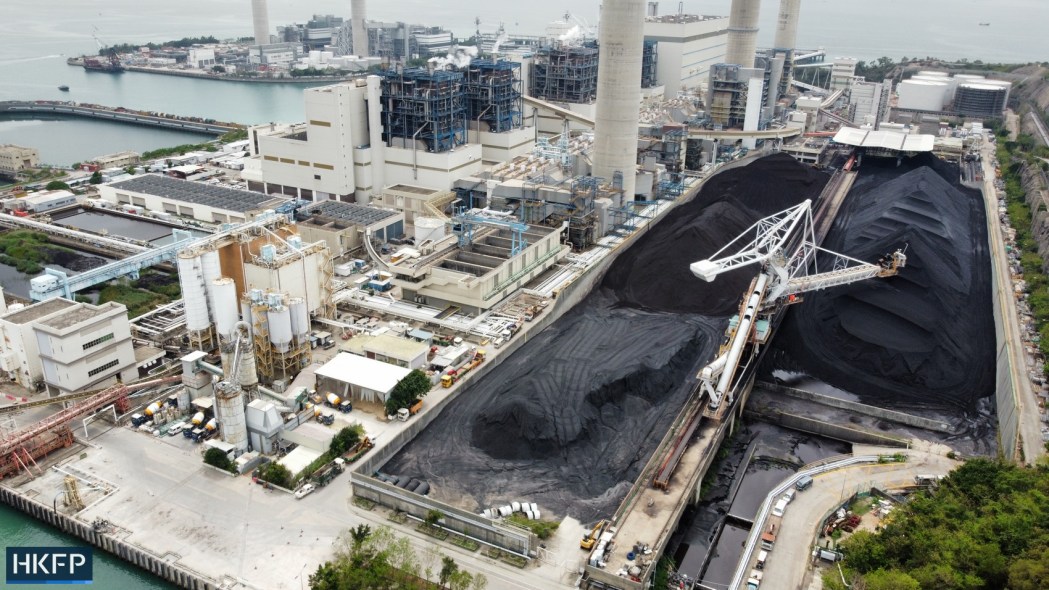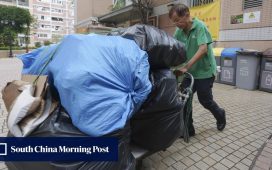
The government must step up climate leadership to achieve its carbon neutrality goal, an environmental NGO has said, amid a heatwave in the city that has seen the death of a 66-year-old construction worker.

“Extreme weather is becoming an unwanted new normal under climate change,” Friends of the Earth said in a statement last Thursday, ahead of Monday’s UN World Environment Day. “As our greenhouse gas emission continues to warm the planet, extreme weather like typhoons and heatwaves will be more frequent and severe.”
Chief Executive John Lee’s 2023 Policy Address vowed to cut “total carbon emissions by 50 per cent before 2035 (from the 2005 level) in order to achieve the goal of carbon neutrality before 2050,” but it was thin on new environmental initiatives.
The green group called on authorities to implement renewable energy sources in the region by collaborating with the Greater Bay Area, and setting up a hydrogen economy to decarbonise industrial processes and transportation.

It also said the city must “accelerate the electrification of its commercial and public transportation systems,” and that the government must strengthen building energy codes and mandate building life cycle assessments.
Secretary for Environment and Ecology Tse Chin-wan told the legislature on May 17 that Hong Kong has only five fully electric taxis on the road – less than one per cent of the 18,163-strong fleet. Furthermore, fees for government charging stations are set to be introduced this year, though the number of stations is set to increase to 7,000 by 2025.
Friends of the Earth recommendations for Hong Kong – click to view.
- Renewable Energy: Electricity generation is the primary source of greenhouse gas emissions in Hong Kong. The government must prioritize the phase-out of fossil fuels and should collaborate with the Greater Bay Area to explore the vast potential of renewable energy sources in the region.
- Hydrogen Economy: Achieving full electrification of energy consumption may prove challenging, especially for certain industrial processes and transportation modes. The government should develop a roadmap for transitioning towards a hydrogen economy.
- Building Life Cycle: The building sector accounts for 90% of the city’s electricity demand, yet the embedded carbon in building materials remains unaccounted for. The Government must strengthen the building energy codes and obligate building life cycle assessments to realise net zero carbon buildings in both construction and operation.
- Low-Carbon Transport: Transportation is the second largest source of greenhouse gas emission in Hong Kong and also contributes to roadside air pollution. Hong Kong must accelerate the electrification of its commercial and public transportation systems.
- Planetary Health Diet: The prevalence of meat-heavy diets in Hong Kong is a significant contributor to the city’s unaccounted-for consumption emission. Hong Kong must actively promote healthier and more sustainable dietary patterns as a key component of its long-term decarbonisation strategy.
- Climate Education: The success of low-carbon solutions and policy strategies hinges on society’s recognition of the urgency of climate change. The government must implement climate and sustainability education in schools and offer vocational training and certification programmes to prepare the society for a low-carbon transition.
- Carbon Pricing: The negative externalities of carbon-emitting activities are not currently reflected in their cost. Hong Kong must implement a carbon pricing mechanism to align with the polluter pays principle and to incentivise the adoption of low-carbon solutions.
- Green Finance: As a top international finance centre, Hong Kong should leverage its robust infrastructure to accelerate the low-carbon transition. The city should expedite the development of its green finance talent pool and align with globally-recognised green and sustainability standards to establish itself as a leading global green financial centre of the future.
- Reforestation: Restoring natural environments, such as forests and mangroves, on a large scale is one of the most effective means to capture atmospheric carbon. The government must preserve existing natural environments and restore degraded ecosystems.
- Carbon Capture, Utilisation and Storage: In addition to tree planting, the government should invest in research and development to explore a variety of carbon removal strategies to address climate change without unintended consequences.
- Climate Adaptation: Beyond cutting emissions, the government must take proactive steps to prepare the city against climate impacts. Hong Kong needs to ensure our infrastructure, economy, and communities are resilient to rising temperatures, sea levels, and extreme weather events such as storms and floods.
As for building codes, the government pledged to increase the energy performance of government buildings and infrastructure by more than 6 per cent by 2024‑25, but remains committed to a huge, controversial buildings project in the New Territories, whilst the HK$580 billion Kau Yi Chau Artificial Islands project involves 1,700 hectares of land reclamation.
Friends of the Earth also said that the government should promote healthier and more sustainable diets and implement climate and sustainability education in schools. Meanwhile, the government should embody the “polluter pays” principle and implement a carbon pricing mechanism, and “expedite the development of its green finance talent pool” to align itself with international sustainability standards, the NGO said.

Investments in reforestation – by preserving existing natural environments and restoring degraded ecosystems – would help ensure the city’s infrastructure, economy, and communities are resilient to climate change, it added, alongside investments in carbon capture, utilisation and storage.
“It is predicted that the world will breach the 1.5°C threshold in the next five years. Climate change threatens all of humanity. Hong Kong’s low-carbon shift requires a recognition that decarbonisation should be the overarching goal of the government,” the statement read.
Heatwave
The mercury exceeded 34 degrees Celsius four times over the last week, with relative humidity ranging from 59 to 93 percent, according to Observatory records.
On Saturday, a 66-year-old glue worker surnamed Ip lost consciousness and fell from scaffolding at the Chinese University’s New Asia College Friendship Lodge, after the Amber heat stress warning was hoisted.
He was later pronounced dead at Prince of Wales Hospital.

The Labour Department last month implemented the three-tier warning system with updated guidelines for rest periods and heat stress prevention, under which outdoor workers are eligible for rest or work suspensions. However, the guidelines are not legally binding.
Last month, the Hong Kong Observatory (HKO) launched a new “Special Weather Tips” notification, which will be issued to app users when the mercury reaches, or exceeds, 35 degrees Celsius.
Support HKFP | Code of Ethics | Error/typo? | Contact Us | Newsletter | Transparency & Annual Report | Apps
Help safeguard press freedom & keep HKFP free for all readers by supporting our team

Support press freedom & help us surpass 1,000 monthly Patrons: 100% independent, governed by an ethics code & not-for-profit.








